From: History News Network
Why Did Truman Really Fire MacArthur? ... The Obscure History of Nuclear Weapons and the Korean War Provides the Answer
By Bruce Cumings
Mr. Cumings is the author of, North Korea: Another Country (2003) and co-author of, Inventing the Axis of Evil: The Truth About North Korea, Iran, and Syria (2004).
The media claim that North Korea is trying to obtain and use weapons of mass destruction. Yet the United States, which opposes this strategy, has used or threatened to use such weapons in northeast Asia since the 1940s, when it did drop atomic bombs on Japan.
The forgotten war -- the Korean war of 1950-53 -- might better be called the unknown war. What was indelible about it was the extraordinary destructiveness of the United States' air campaigns against North Korea, from the widespread and continuous use of firebombing (mainly with napalm), to threats to use nuclear and chemical weapons (1), and the destruction of huge North Korean dams in the final stages of the war. Yet this episode is mostly unknown even to historians, let alone to the average citizen, and it has never been mentioned during the past decade of media analysis of the North Korean nuclear problem.
Korea is also assumed to have been a limited war, but its prosecution bore a strong resemblance to the air war against Imperial Japan in the second world war, and was often directed by the same US military leaders. The atomic attacks on Hiroshima and Nagasaki have been examined from many different perspectives, yet the incendiary air attacks against Japanese and Korean cities have received much less attention. The US post-Korean war air power and nuclear strategy in northeast Asia are even less well understood; yet these have dramatically shaped North Korean choices and remain a key factor in its national security strategy.
Napalm was invented at the end of the second world war. It became a major issue during the Vietnam war, brought to prominence by horrific photos of injured civilians. Yet far more napalm was dropped on Korea and with much more devastating effect, since the Democratic People's Republic of Korea (DPRK) had many more populous cities and urban industrial installations than North Vietnam. In 2003 I participated in a conference with US veterans of the Korean war. During a discussion about napalm, a survivor who lost an eye in the Changjin (in Japanese, Chosin) Reservoir battle said it was indeed a nasty weapon -- but "it fell on the right people." (Ah yes, the "right people" -- a friendly-fire drop on a dozen US soldiers.) He continued: "Men all around me were burned. They lay rolling in the snow. Men I knew, marched and fought with begged me to shoot them . . . It was terrible. Where the napalm had burned the skin to a crisp, it would be peeled back from the face, arms, legs . . . like fried potato chips." (2)
Soon after that incident, George Barrett of the New York Times had found "a macabre tribute to the totality of modern war" in a village near Anyang, in South Korea: "The inhabitants throughout the village and in the fields were caught and killed and kept the exact postures they held when the napalm struck -- a man about to get on his bicycle, 50 boys and girls playing in an orphanage, a housewife strangely unmarked, holding in her hand a page torn from a Sears-Roebuck catalogue crayoned at Mail Order No 3,811,294 for a $2.98 'bewitching bed jacket -- coral'." US Secretary of State Dean Acheson wanted censorship authorities notified about this kind of "sensationalised reporting," so it could be stopped. (3)
One of the first orders to burn towns and villages that I found in the archives was in the far southeast of Korea, during heavy fighting along the Pusan Perimeter in August 1950, when US soldiers were bedevilled by thousands of guerrillas in rear areas. On 6 August a US officer requested "to have the following towns obliterated" by the air force: Chongsong, Chinbo and Kusu-dong. B-29 strategic bombers were also called in for tactical bombing. On 16 August five groups of B-29s hit a rectangular area near the front, with many towns and villages, creating an ocean of fire with hundreds of tons of napalm. Another call went out on the 20 August. On 26 August I found in this same source the single entry: "fired 11 villages." (4) Pilots were told to bomb targets that they could see to avoid hitting civilians, but they frequently bombed major population centres by radar, or dumped huge amounts of napalm on secondary targets when the primary one was unavailable.
In a major strike on the industrial city of Hungnam on 31 July 1950, 500 tons of ordnance was delivered through clouds by radar; the flames rose 200-300 feet into the air. The air force dropped 625 tons of bombs over North Korea on 12 August, a tonnage that would have required a fleet of 250 B-17s in the second world war. By late August B-29 formations were dropping 800 tons a day on the North. (5) Much of it was pure napalm. From June to late October 1950, B-29s unloaded 866,914 gallons of napalm.
Air force sources delighted in this relatively new weapon, joking about communist protests and misleading the press about their "precision bombing." They also liked to point out that civilians were warned of the approaching bombers by leaflet, although all pilots knew that these were ineffective. (6) This was a mere prelude to the obliteration of most North Korean towns and cities after China entered the war.
China joins the war
The Chinese entry caused an immediate escalation of the air campaign. From November 1950, General Douglas MacArthur ordered that a wasteland be created between the fighting front and the Chinese border, destroying from the air every "installation, factory, city, and village" over thousands of square miles of North Korean territory. As a well-informed British attaché to MacArthur's headquarters observed, except for Najin near the Soviet border and the Yalu dams (both spared so as not to provoke Moscow or Beijing), MacArthur's orders were "to destroy every means of communication and every installation, and factories and cities and villages. This destruction is to start at the Manchurian border and to progress south." On 8 November 1950, 79 B-29s dropped 550 tons of incendiaries on Sinuiju, "removing [it] from off the map." A week later Hoeryong was napalmed "to burn out the place." By 25 November "a large part of [the] North West area between Yalu River and south to enemy lines is more or less burning"; soon the area would be a "wilderness of scorched earth." (7)
This happened before the major Sino-Korean offensive that cleared northern Korea of United Nations forces. When that began, the US air force hit Pyongyang with 700 500-pound bombs on 14-15 December; napalm dropped from Mustang fighters, with 175 tons of delayed-fuse demolition bombs, which landed with a thud and then blew up when people were trying to retrieve the dead from the napalm fires.
At the beginning of January General Matthew Ridgway again ordered the air force to hit the capital, Pyongyang, "with the goal of burning the city to the ground with incendiary bombs" (this happened in two strikes on 3 and 5 January). As the Americans retreated below the 38th parallel, the scorched-earth policy of torching continued, burning Uijongbu, Wonju and other small cities in the South as the enemy drew near. (8)
The air force also tried to destroy the North Korean leadership. During the war on Iraq in 2003 the world learned about the MOAB, "Mother of All Bombs," weighing 21,500 pounds with an explosive force of 18,000 pounds of TNT. Newsweek put this bomb on its cover, under the headline "Why America Scares the World." (9) In the desperate winter of 1950-51 Kim Il Sung and his closest allies were back where they started in the 1930s, holed up in deep bunkers in Kanggye, near the Manchurian border. After failing to find them for three months after the Inch'on landing (an intelligence failure that led to carpet-bombing the old Sino-Korean tributary route running north from Pyongyang to the border, on the assumption that they would flee to China), B-29s dropped Tarzan bombs on Kanggye. These were enormous 12,000-pound bombs never deployed before -- but firecrackers compared to the ultimate weapons, atomic bombs.
A blocking blow
On 9 July 1950 -- just two weeks into the war, it is worth remembering -- MacArthur sent Ridgway a hot message that prompted the joint chiefs of staff (JCS) "to consider whether or not A-bombs should be made available to MacArthur." The chief of operations, General Charles Bolte, was asked to talk to MacArthur about using atomic bombs "in direct support [of] ground combat." Bolte thought 10-20 such bombs could be spared for Korea without unduly jeopardising US global war capabilities.
Boite received from MacArthur an early suggestion for the tactical use of atomic weapons and an indication of MacArthur's extraordinary ambitions for the war, which included occupying the North and handling potential Chinese -- or Soviet -- intervention: "I would cut them off in North Korea . . . I visualise a cul-de-sac. The only passages leading from Manchuria and Vladivostok have many tunnels and bridges. I see here a unique use for the atomic bomb -- to strike a blocking blow -- which would require a six months' repair job. Sweeten up my B-29 force."
At this point, however, the JCS rejected use of the bomb because targets large enough to require atomic weapons were lacking; because of concerns about world opinion five years after Hiroshima; and because the JCS expected the tide of battle to be reversed by conventional military means. But that calculation changed when large numbers of Chinese troops entered the war in October and November 1950.
At a famous news conference on 30 November President Harry Truman threatened use of the atomic bomb, saying the US might use any weapon in its arsenal. (10) The threat was not the faux pas many assumed it to be, but was based on contingency planning to use the bomb. On that same day, Air Force General George Stratemeyer sent an order to General Hoyt Vandenberg that the Strategic Air Command should be put on warning, "to be prepared to dispatch without delay medium bomb groups to the Far East . . . this augmentation should include atomic capabilities."
General Curtis LeMay remembered correctly that the JCS had earlier concluded that atomic weapons would probably not be useful in Korea, except as part of "an overall atomic campaign against Red China." But, if these orders were now being changed because of the entry of Chinese forces into the war, LeMay wanted the job; he told Stratemeyer that only his headquarters had the experience, technical training, and "intimate knowledge" of delivery methods. The man who had directed the firebombing of Tokyo in 1945 was again ready to proceed to the Far East to direct the attacks. (11) Washington was not worried that the Russians would respond with atomic weapons because the US possessed at least 450 bombs and the Soviets only 25.
On 9 December MacArthur said that he wanted commander's discretion to use atomic weapons in the Korean theatre. On 24 December he submitted "a list of retardation targets" for which he required 26 atomic bombs. He also wanted four to drop on the "invasion forces" and four more for "critical concentrations of enemy air power."
In interviews published posthumously, MacArthur said he had a plan that would have won the war in 10 days: "I would have dropped 30 or so atomic bombs . . . strung across the neck of Manchuria." Then he would have introduced half a million Chinese Nationalist troops at the Yalu and then "spread behind us -- from the Sea of Japan to the Yellow Sea -- a belt of radioactive cobalt . . . it has an active life of between 60 and 120 years. For at least 60 years there could have been no land invasion of Korea from the North." He was certain that the Russians would have done nothing about this extreme strategy: "My plan was a cinch." (12)
A second request
Cobalt 60 has 320 times the radioactivity of radium. One 400-ton cobalt H-bomb, historian Carroll Quigley has written, could wipe out all animal life on earth. MacArthur sounds like a warmongering lunatic, but he was not alone. Before the Sino-Korean offensive, a committee of the JCS had said that atomic bombs might be the decisive factor in cutting off a Chinese advance into Korea; initially they could be useful in "a cordon sanitaire [that] might be established by the UN in a strip in Manchuria immediately north of the Korean border." A few months later Congressman Albert Gore, Sr. (Father of former VP and 2000 Democratic candidate Al Gore, Jr., and subsequently a strong opponent of the Vietnam war) complained that "Korea has become a meat grinder of American manhood" and suggested "something cataclysmic" to end the war: a radiation belt dividing the Korean peninsula permanently into two.
Although Ridgway said nothing about a cobalt bomb, in May 1951, after replacing MacArthur as US commander in Korea, he renewed MacArthur's request of 24 December, this time for 38 atomic bombs. (13) The request was not approved.
The US came closest to using atomic weapons in April 1951, when Truman removed MacArthur. Although much related to this episode is still classified, it is now clear that Truman did not remove MacArthur simply because of his repeated insubordination, but because he wanted a reliable commander on the scene should Washington decide to use nuclear weapons; Truman traded MacArthur for his atomic policies. On 10 March 1951 MacArthur asked for a "D-Day atomic capability" to retain air superiority in the Korean theatre, after the Chinese massed huge new forces near the Korean border and after the Russians put 200 bombers into airbases in Manchuria (from which they could strike not just Korea but also US bases in Japan). (14) On 14 March General Vandenberg wrote: "Finletter and Lovett alerted on atomic discussions. Believe everything is set."
At the end of March Stratemeyer reported that atomic bomb loading pits at Kadena Air Base on Okinawa were again operational; the bombs were carried there unassembled, and put together at the base, lacking only the essential nuclear cores. On 5 April the JCS ordered immediate atomic retaliation against Manchurian bases if large numbers of new troops came into the fighting, or, it appears, if bombers were launched from there against US assets. On that day the chairman of the Atomic Energy Commission, Gordon Dean, began arrangements for transferring nine Mark IV nuclear capsules to the Air Force's 9th Bomb Group, the designated carrier for atomic weapons.
The JCS again considered the use of nuclear weapons in June 1951, this time in tactical battlefield circumstances (15) and there were many more such suggestions as the war continued to 1953. Robert Oppenheimer, former director of the Manhattan Project, was involved in Project Vista, designed to gauge the feasibility of the tactical use of atomic weapons. In 1951 young Samuel Cohen, on a secret assignment for the US Defence Department, observed the battles for the second recapture of Seoul and thought there should be a way to destroy the enemy without destroying the city. He became the father of the neutron bomb. (16)
The most terrifying nuclear project in Korea, however, was Operation Hudson Harbour. It appears to have been part of a larger project involving "overt exploitation in Korea by the Department of Defence and covert exploitation by the Central Intelligence Agency of the possible use of novel weapons" -- a euphemism for what are now called weapons of mass destruction.
The 'limited war'
Without even using such "novel weapons" -- although napalm was very new -- the air war levelled North Korea and killed millions of civilians. North Koreans tell you that for three years they faced a daily threat of being burned with napalm: "You couldn't escape it," one told me in 1981. By 1952 just about everything in northern and central Korea had been completely levelled. What was left of the population survived in caves.
Over the course of the war, Conrad Crane wrote, the US air force "had wreaked terrible destruction all across North Korea. Bomb damage assessment at the armistice revealed that 18 of 22 major cities had been at least half obliterated." A table he provided showed that the big industrial cities of Hamhung and Hungnam were 80-85% destroyed, Sariwon 95%, Sinanju 100%, the port of Chinnampo 80% and Pyongyang 75%. A British reporter described one of the thousands of obliterated villages as "a low, wide mound of violet ashes." General William Dean, who was captured after the battle of Taejon in July 1950 and taken to the North, later said that most of the towns and villages he saw were just "rubble or snowy open spaces." Just about every Korean he met, Dean wrote, had had a relative killed in a bombing raid. (17) Even Winston Churchill, late in the war, was moved to tell Washington that when napalm was invented, no one contemplated that it would be "splashed" all over a civilian population. (18)
This was Korea, "the limited war." The views of its architect, Curtis LeMay, serve as its epitaph. After it started, he said: "We slipped a note kind of under the door into the Pentagon and said let us go up there . . . and burn down five of the biggest towns in North Korea -- and they're not very big -- and that ought to stop it. Well, the answer to that was four or five screams -- 'You'll kill a lot of non-combatants' and 'It's too horrible.' Yet over a period of three years or so . . . we burned down every town in North Korea and South Korea, too . . . Now, over a period of three years this is palatable, but to kill a few people to stop this from happening -- a lot of people can't stomach it." (19)
NOTES
(1) Stephen Endicott and Edward Hagerman, "First victims of biological warfare," Le Monde diplomatique, English language edition, July 1999.
(2) Quoted in Clay Blair, Forgotten War, Random House, New York, 1989.
(3) US National Archives, 995.000 file, box 6175, George Barrett dispatch of 8 February 1951.
(4) National Archives, RG338, KMAG file, box 5418, KMAG journal, entries for 6, 16, 20 and 26 August 1950.
(5) See the New York Times, 31 July, 2 August and 1 September 1950.
(6) See "Air War in Korea," Air University Quarterly Review 4 no 2, autumn 1950, and "Precision bombing," ibid, n° 4, summer 1951.
(7) MacArthur Archives, RG6, box 1, Stratemeyer to MacArthur, 8 November 1950; Public Record Office, FO 317, piece n° 84072, Bouchier to Chiefs of Staff, 6 November 1950; piece n° 84073, 25 November 1959 sitrep.
(8) Bruce Cumings, The Origins of the Korean War, vol. 2, Princeton University Press, 1990; New York Times, 13 December 1950 and 3 January 1951.
(9) Newsweek, 24 March 2003.
(
10) New York Times, 30 November and 1 December 1950.
(11) Hoyt Vandenberg Papers, box 86, Stratemeyer to Vandenberg, 30 November 1950; LeMay to Vandenberg, 2 December 1950. Also Richard Rhodes, Dark Sun: The Making of the Hydrogen Bomb, Touchstone, Simon & Schuster, New York, 1995.
(12) Bruce Cumings, op cit; Charles Willoughby Papers, box 8, interviews by Bob Considine and Jim Lucas in 1954, published in the New York Times, 9 April 1964.
(13) Carroll Quigley, Tragedy and Hope: A History of the World in Our Time, MacMillan, New York, 1966; Quigley was Bill Clinton's favorite teacher at Georgetown University. See also Bruce Cumings, op cit.
(14) Documents released after the Soviet Union collapsed do not bear this out; scholars who have seen these documents say there was no such major deployment of Soviet air power at the time. However, US intelligence reports believed the deployment happened, perhaps based on effective disinformation by the Chinese.
(15) This does not mean the use of "tactical" nuclear weapons, which were not available in 1951, but the use of the Mark IVs in battlefield tactical strategy, much as heavy conventional bombs dropped by B-29 bombers had been used on battlefields since August 1950.
(16) Samuel Cohen was a childhood friend of Herman Kahn. See Fred Kaplan, The Wizards of Armageddon, Simon & Schuster, New York, 1983. On Oppenheimer and Project Vista, see Bruce Cumings, op cit; also David Elliot, "Project Vista and Nuclear Weapons in Europe," International Security 2, n° 1, summer 1986.
(17) Conrad Crane, American Airpower Strategy in Korea, University Press of Kansas, 2000.
(18) Jon Halliday and Bruce Cumings, Korea: The Unknown War, Pantheon Books, New York, 1988.
(19) J F Dulles Papers, Curtis LeMay oral history, 28 April 1966.
Subscribe to:
Post Comments (Atom)











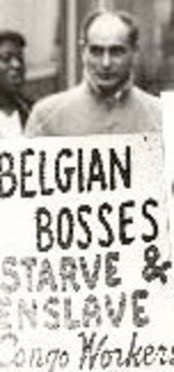

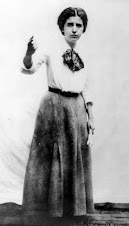






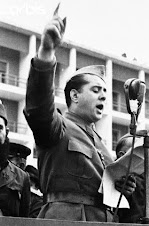


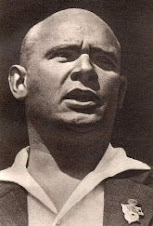




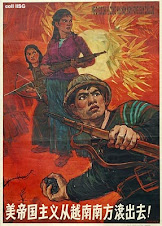




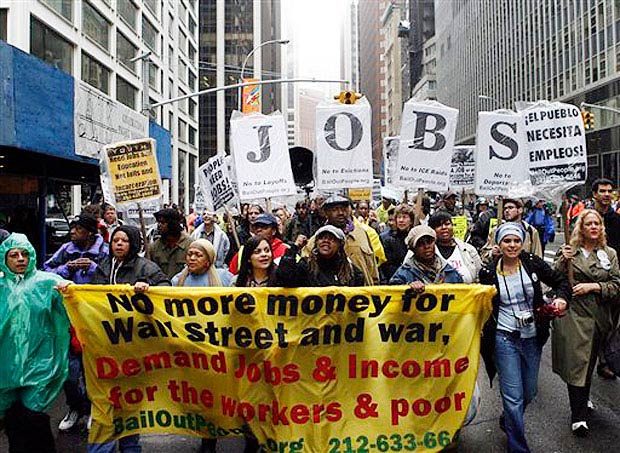
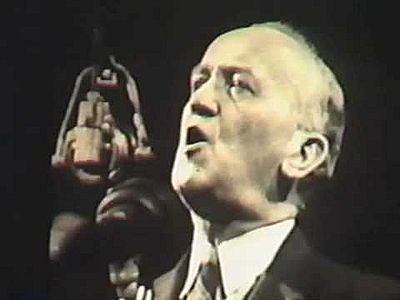

No comments:
Post a Comment